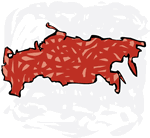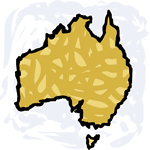Agent Pincher: The Case of the UFO


Agent Pincher: The Case of the UFO–Unfamiliar Foreign Objects. That is what currency from another country may look like. Sometimes when people first try to use money from another country, they feel like they are playing with toy money-it is a different size, color, and shape, compared to one’s own national currency, and it often comes with unfamiliar writing. As a special agent, your job is get the facts on these UFOs and compile a profile for guide book for your section.
Introduction
This lesson enables you to introduce the concepts of trade, foreign currency, exchange rates, imports and ex ports to your students. If you have not taught your students about the characteristics and functions of money, you may wish to explore one of the EconEdLink lessons listed in the Resources before proceeding with this lesson. The students will need a basic understanding of money’s function as a medium of exchange.
ports to your students. If you have not taught your students about the characteristics and functions of money, you may wish to explore one of the EconEdLink lessons listed in the Resources before proceeding with this lesson. The students will need a basic understanding of money’s function as a medium of exchange.
The students will research a specific country, gather data and share their findings with the class by creating a fact book.
Lessons to consider teaching before this lesson:
Learning Objectives
- Describe the currency from other countries and explain how foreign currency functions in the same way as United States currency.
- Identify at least one foreign currency and the country that uses that currency, and be able to complete one calculation of the exchange rate between U.S. dollars and that currency.
- Identify economic characteristics (indicators) of other countries.
Resource List
-
Lessons to consider teaching before this lesson:
-
Student Notebook: The students will need to fill this out to complete the lesson.
Student Notebook
-
Teacher Briefing: This worksheet can be used to brief the class and prepare them for the lesson.
Teacher Briefing
-
International Currency Factbook: This EconEdLink Worksheet allows students to compare international currency.
International Currency Factbook
-
The UN Cyber School Bus: Here the students can explore information about various countries around the world, according to categories such as Economy, Health, Environment, etc.
www.un.org/Pubs/CyberSchoolBus/
-
CIA World Fact Book. This location will provide students with easy access to information that will help them complete their Agent Notebook on their selected country.
www.cia.gov/library/publications/the-world-factbook/index.html
-
International Bank Note Society: Using this site, students can print out a picture of the front and back of their country's most recent currency.
www.friesian.com/notes.htm
-
Central Intelligence Agency: The students can explore the following site to find information about various countries and their import/export commodities.
-
Import Commodities
www.cia.gov/library/publications/the-world-factbook/fields/2058.html -
Export Commodities
www.cia.gov/library/publications/the-world-factbook/fields/2049.html
-
Import Commodities
-
Lost Memo: This memo will provide good practice for students in their attempts to understand exchange rates.
https://econedlink.org/wp-content/uploads/legacy/605_lostmemo1.pdf
Process
-
Make sure the students are prepared to begin this lesson, and they have their Student Notebook. Three lessons are posted in the resource sec
 tion as background material for this lesson. Also, the Teacher's Briefing can be used as a starting point.
tion as background material for this lesson. Also, the Teacher's Briefing can be used as a starting point. - Explain that the students will be investigating something that is probably not familiar to them (unless they have had the opportunity for foreign travel) – foreign currency.
- Select approximately 10 countries more than the number of students in your class. You may wish to focus your selections on a region of the world that you wish to introduce, or one that is included in your curriculum. You may also let the students sign up for their own choices–but avoid duplication. You may choose to group students in pairs to accomplish the research.
- Print out the International Currency Fact Sheet. Post this in a convenient location so that students can enter data regarding the currency of the country of their research.
-
Have the students print out a copy of the Agent Notebook. The students will complete their notebooks by following the assignments listed below.
Assignment 1:
The students will visit the UN Cyber School Bus to view the country they have picked and to obtain a picture and some general information about that country.
Assignment 2:
Have the students use the to complete assignment 2 in the Agent Notebook.
Assignment 3:
Have the students fill in the International Currency Factsheet with the information they have gained through
 research.
research.Have the students print out a picture of the front and back of their country's most recent currency. Pictures of currency can be viewed at the International Bank Note Society . Students will need first to select a language: then they should select "paper money virtual gallery." Once there, the students need to select "banknotes," which leads them to different maps of different continents. Have the students find their country by clicking on a the continent it belongs to.
Assignment 4:
Have the students complete assignment 4 in their Agent Notebook.
A calculator is recommended for assignment 4.
You may choose to use a world map and place push pins in the capital cities of the researched countries. When the students have identified exports and imports, you might use different-colored threads to link countries to their trading partn
 ers. This will illustrate the interdependence of nations in a global market.
ers. This will illustrate the interdependence of nations in a global market.At the conclusion of the activity, compile the students' completed Agent Notebooks to create a factbook for the countries researched.
Conclusion
Take a moment to review with your students the names of the different currencies their countries use. Also, take note of how their currencies stack up against the U.S. dollar. Using assignment 4 from their completed Agent Notebooks, you can show the class these exchange relations. Conclude the lesson by asking the class to discuss the following questions:
- What is an export? Who receives the commodities?
- Why do people trade?
- What is the UFO? – Unidentified Foreign Objects? (Currency from other countries.)
- Why doesn’t everybody in the world use U.S. dollars? Or euros?
- Why do we no longer use pieces of gold for exchange?
You can visit the following two sites in the CIA World Fact Book to learn about various countries and identify their import-commodities as well as their export-commodities .
As a final challenge, present this lost memo and see if any students can figure out the exchange rate, using the knowledge they have gathered from the lesson. This memo can be used from the Web site or it can be printed out and distributed among the students. The information found in the memo was taken from one of the Harry Potter books.
[It has been a mystery to figure out how much the Harry Potter currency is worth. If I got this memo, first I'd figure out: $250 million = 34 million Galleon. What would 1 Galleon be worth? Then maybe I'd figure out (in today's dollars since that was back in 1985) the next step: If something was worth $250 million dollars in 1985, how much is that in 2005? From there (assuming a fixed exchange rate), how many Galleons is it worth today? And then the kids could figure the number of Knuts and Sickles.]
Extension Activity
When you have finished the main lesson, your students might have enough energy left to pursue more information and make some comparisons. You may wish to divide your students into groups and instruct them to return to the UN Cyber School Bus site.
Instruct the students to enter their countries' names again and then select go. Here they should be patient: there is a lot of information to bring together. As a group, they may select up to 6 comparison data categories. Don't forget to look for the small printer icon to print out the data. Once they have their data, the students can make inferences based on the information they have found. For example: They can find the population of China and Australia and also the surface area of these two countries. They will see that China has many more people living in a smaller area: therefore, China would be very crowded compared to Australia.
Have the students write down their findings and ,with time permitting, you can have a class discussion about their inferences. Identity factors you'd like to have them use in making comparisons about each country: the economy and technology categories, for example, will provide you several items worthy of class discussion. Suggest selected categories that would be common for each group to use as a basis of comparison: Population, economy, health, technology, environment.
Assessment
- Ask the students to create a memo to the Big Bosses, providing a one-page briefing on the country they have researched.
- For an integrated assignment, have the students create drawings, or find pictures on the Web, of the top three items their country exports, and have them identify other students who represent countries with which they have trade relations. If students are able to handle the math, have them identify what the exchange rate would be between countries (not including the U.S. dollar).
